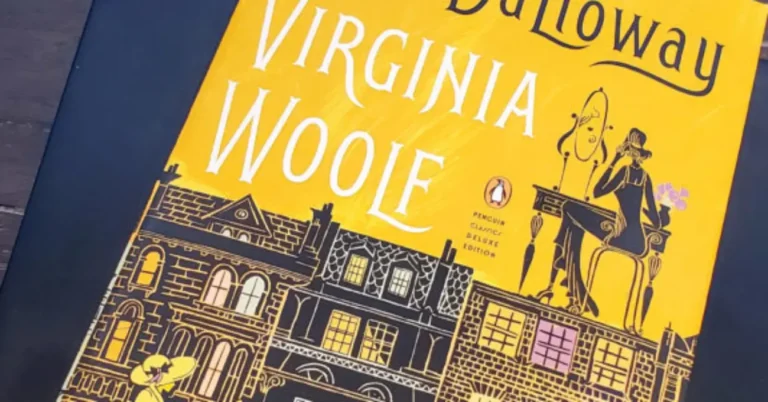Virginia Woolf, a pioneer in the literary world, was deeply engrossed in the exploration of innovative narrative techniques. Her novels, celebrated as groundbreaking masterpieces, introduced avant-garde forms of fiction, charting new territories previously untraversed.
These works boldly shattered the conventional moulds of storytelling, distancing themselves from the well-trodden paths of the Victorian (1837-1901) and Edwardian (1901-1910) eras. Woolf’s narrative experimentation was a declaration of independence from the narrative norms of these ancient ages, heralding a new era in the art of novel writing.
The First World War was a trauma and brought out a crisis. A break is always prepared, the main innovators were Thomas Hardy and Joseph Conrad.
Woolf belongs to an aesthetic movement called the Modernist Novel. “Mrs Dalloway” was published in 1925, which was the year hinging the middle of her career: at the beginning of her career, she was rather traditional (Edwardian) but at the end, “The Waves” is a lyrical fiction, a long and unconventional narrative poem.
“Mrs Dalloway” is still in its shape and structure a novel but at the same time, few clues can be found that point out what Woolf will carry further afterwards.
An interest in subjectivity
The Modernist Novel shows an interest in subjectivity: feelings, recollections, sensations – all the mind’s abilities. The Modernist Novel is more concerned with investigating mental processes than reporting a story. Modernism is a direct consequence of psychoanalysis (Freud and later Lacan).
The plot is not going to be the main structural element as Woolf hated the plot and its fixity: “This appalling narrative business of the realist”. The plot constrains and imposes a unitary plan, hampers and blocks the limitless possibilities of the imagination. “Mrs Dalloway” does not feature a single plot line but a multiplicity of perspectives.
There is a sequential structure: blocks of narrative are to be found for the narrator dwells first with Clarissa’s mind, then Septimus’s mind, and finally Walsh’s mind. The narrator jumps from one mind to another: there are no transitions between these blocks of narrative.
A focus on apparently insignificant details
The Modernist Novel insists on apparently insignificant details, for example, the tree in “Mrs Dalloway”. The tree is a recurrent image, it’s also invested/endowed with subjective meaning. The character projects onto the tree subjective visions.
The tree is packed with different levels of meaning:
- trees outside
- trees inside Walsh’s mind as he is daydreaming: he has the sensation that a branch is caressing his face.
At the same moment, another man is sitting in the park: Septimus also has a vision brought on by the trees surrounding him (p.63). The two characters’s minds worked with the trees differently. The characters are linked through their subjectivity.
Woolf wants to show that deep inside, characters that are not related can nevertheless share emotions or states of mind.
Perception as an act of creation
The Modernist Novel is not interested in copying out the outside world (mimesis) but showing the act of perception as an act of creation.
When the character is in a situation, he recreates an image of reality. Our perception is influenced by our memories. Being conscious of the outside reality always involves an act of reconstruction. Seeing is not passive, it is an active process.
Time plays a pivotal role in the tapestry of this novel. Woolf, originally contemplating the title “The Hours,” sought to encapsulate the essence of time’s fleeting nature. “Mrs. Dalloway” stands distinctively apart from her other works, as it meticulously unfolds over a single, sweltering day on Wednesday, 13th June 1923.
This narrative choice not only serves to intensify the drama of the ordinary but also positions “Mrs. Dalloway” as a nod to James Joyce’s “Ulysses” (1922), mirroring its temporal confinement and depth, thus weaving an intricate homage to the mastery of capturing life’s ephemeral moments within the confines of a day.
The hour at the beginning of the novel is not explicit but at the end, it is 3 am the following night: it covers 18 hours. It is a special day: Mrs. Dalloway gives a party to which members of the English establishment are invited.
Time is a psychological time (consciousness) and a chronological time with the chimes of Big Ben:
- The psychological time is composed of different strata of time. The past is laid out on several levels. The subjective time cannot be limited to the past. The present is evanescent and very fragile – it represents what cannot be fixed.
- The chronological time covers the cosmic time (the cycle of the seasons, the position of the sun) and the divisions of the day fixed by the community (working hours and resting hours).
First, let’s consider time on the surface level.

